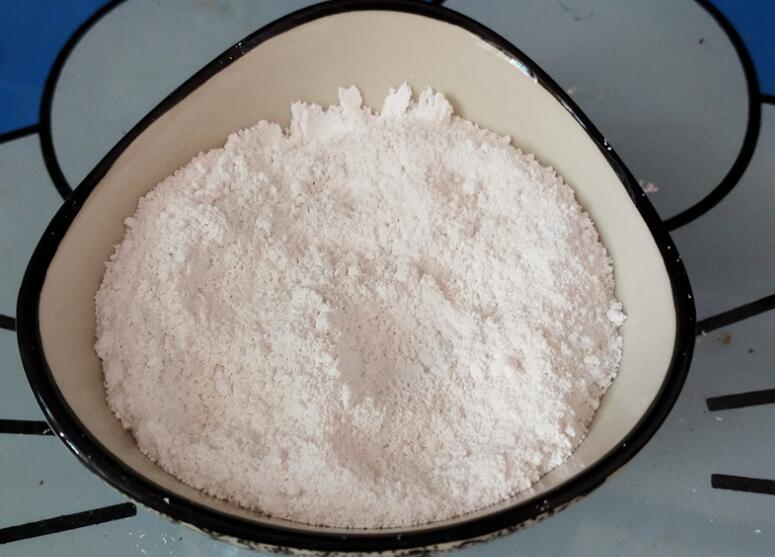Synergistic effect of magnesium hydroxide on cross-linked polyethylene cable materials: analysis of key technologies to improve performance and safety

With the rapid development of power transmission and communication networks, the performance and safety of cross-linked polyethylene (XLPE) cables, as the core carrier of power transmission, have attracted much attention. In recent years, magnesium hydroxide (Mg(OH)₂), as an efficient and environmentally friendly flame retardant, has been widely used in the modification of XLPE cable materials. This article deeply explores the synergistic effect of magnesium hydroxide and cross-linked polyethylene cable materials, analyzes from multiple dimensions such as flame retardancy, thermal stability, and mechanical strength, and reveals its key value in improving the comprehensive performance of cables.
1. Characteristics of magnesium hydroxide and its application advantages in cable materials
1.1 Physical and chemical properties of magnesium hydroxide
Magnesium hydroxide is a white crystalline powder with the following significant characteristics:
- High decomposition temperature (above 340°C), suitable for high-temperature processing environment
- Endothermic decomposition reaction: Mg(OH)₂ → MgO + H₂O (endothermic 1870 J/g)
- Halogen-free and environmentally friendly: only water vapor is released during combustion, and no toxic gas is produced
- Particle size controllability: nano-scale dispersion effect can be achieved through surface modification
1.2 Challenges and demands of cross-linked polyethylene cables
Traditional XLPE cable materials face three major pain points:
1. Insufficient flame retardancy: ordinary polyethylene has a limiting oxygen index (LOI) of only 17% and is flammable
2. Thermal stability limitation: easy to soften and deform at high temperature, affecting power transmission efficiency
3. Mechanical performance degradation: tensile strength decreases after long-term use, and insulation failure is prone to occur
2. Synergistic mechanism of magnesium hydroxide and XLPE
2.1 Synergistic improvement of flame retardant performance
Magnesium hydroxide and polyethylene matrix achieve flame retardant synergy through multiple mechanisms:
- Gas phase flame retardant: water vapor generated by decomposition dilutes the concentration of combustible gas
- Condensed phase flame retardant: the generated magnesium oxide forms a dense protective layer (thickness of about 50-200nm)
- Carbon layer strengthening effect: when reused with silicon-based flame retardants, the residual carbon rate of the carbon layer is increased to more than 40%
Experimental data show that: XLPE material with 40% magnesium hydroxide added, the LOI value can be increased from 17% to 32%, and the vertical combustion test reaches the V-0 level standard.
2.2 Synergistic optimization of thermal stability
The endothermic decomposition characteristics of magnesium hydroxide significantly improve the thermal stability of the material:
- Heat release rate (HRR) is reduced by 60%
- Thermal decomposition temperature is increased to above 380℃
- Carbon layer thermal conductivity is reduced to 0.12 W/(m·K), delaying thermal diffusion
2.3 Synergistic enhancement of mechanical properties
Through surface modification technology, magnesium hydroxide can effectively improve the mechanical properties of XLPE:
- Tensile strength retention rate is increased by 30% (still 18MPa when adding 30%)
- Elongation at break is increased to more than 200%
- Surface hardness is increased by 20%, and wear resistance is significantly improved
III. Key technology breakthroughs and industrial applications
3.1 Surface modification technology
Use silane coupling agent (such as KH-550) to treat magnesium hydroxide surface:
- Contact angle is reduced from 85° to 35°, improving dispersibility
- Particle agglomeration rate is reduced to less than 5%
- The bonding strength with the matrix interface is increased by 50%
3.2 Compounding synergistic system
Performance optimization is achieved through multi-component synergy:
- Magnesium hydroxide/aluminum hydroxide compounding: flame retardant efficiency is increased by 15%
- Nanoclay composite system: heat deformation temperature is increased by 25℃
- Silicone synergist: impact strength is increased by 40%
3.3 Industrial application cases
Application in high-voltage DC cables:
- Voltage level increased to 500kV
- Long-term operating temperature reaches 90℃
- Service life is extended to more than 40 years
IV. Future development trends and technical challenges
4.1 Technical development direction
1. Nano-scale dispersion technology: Development of modified magnesium hydroxide with a particle size of <100nm
2. Intelligent response materials: Research on temperature-sensitive flame retardant systems
3. Utilization of renewable resources: The recovery rate of magnesium hydroxide in waste cables is increased to 95%
4.2 Challenges faced by the industry
- Decreased processing fluidity due to high filling content
- Performance degradation in long-term hot and humid environments
- Balance between cost control and performance optimization
V. FAQ
Q1: What are the main differences between magnesium hydroxide and aluminum hydroxide in cable applications?
A1: Magnesium hydroxide has a higher decomposition temperature (340℃ vs. 180℃), which is more suitable for high-temperature processing; aluminum hydroxide has higher flame retardant efficiency but poor heat resistance, and it is usually recommended to use it in combination.
Q2: How to solve the problem of mechanical property degradation caused by high-filled magnesium hydroxide?
A2: Using double-layer grafting modification technology to build an elastic interface layer on the surface of Mg(OH)₂ can maintain the toughness of the material.
Q3: What are the environmental advantages of magnesium hydroxide modified cables?
A3: It complies with the requirements of the RoHS directive, and the combustion smoke density is less than 15%, which is much lower than the halogen-containing flame retardant system (>80%).
The synergistic effect of magnesium hydroxide and cross-linked polyethylene provides a new idea for the development of high-performance cable materials. With the breakthroughs in surface modification technology and nano-composite technology, it is expected to achieve a double breakthrough in flame retardant efficiency improvement and comprehensive performance optimization in the future. The industry needs to continue to focus on the integration of green manufacturing processes and intelligent production technologies, and promote the development of cable materials towards being safer, more environmentally friendly, and longer-lasting.








